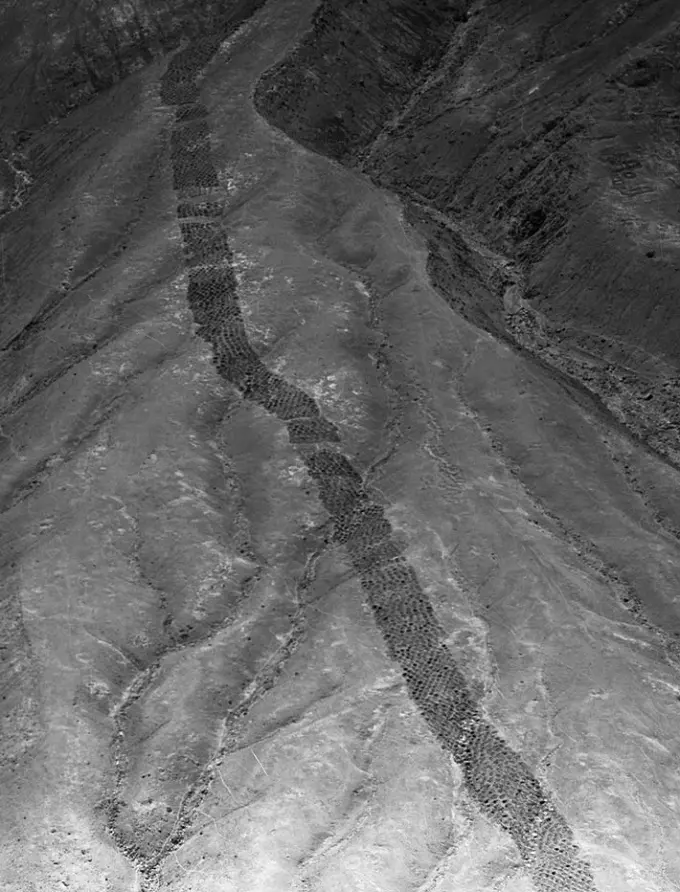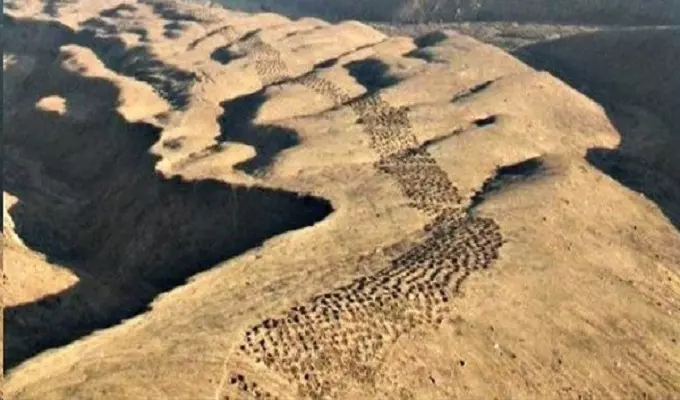The band of holes: the mystery of Pisco valley

In the Pisco area, there is a unique ancient earthwork. It is a strip, about 20 meters wide and about one and a half kilometers long, consisting of small pits – the band of holes.
South of the Peruvian capital Lima, toward the Nasca Plain, is the Pisco Valley. Behind the village of Humay, a kilometer-long ribbon of dark pits stretches over the hill.
When viewed from a great height, this ribbon resembles the trail of a giant caterpillar, but on direct inspection on the spot, no such association arises.

These strange band of holes in the steep slopes of the hill were dug by human hands, and are not the footprints of any vehicle.
The Indians had enclosed the hill with a stone wall, a sort of defensive structure, but it was not. First, some arrows would block the view of others, and second, the neighboring hill was higher than the one on which the pits were located. A potential enemy would hold this defensive structure under fire from all sides and could easily crush its defenders. What, then, were these bands of holes for?

Researchers have noticed that the eight pits always form a line. In modern computer language, we can say that these are eight bits, each corresponding to a circuit element, or that they all together form a single byte. The number of such bytes is 176. The basis of computer use is binary code.
All calculations are made by means of one or slug, yes or no, true or false, and any number or message can be composed using binary combinations.
Suppose the crashed astronauts wanted to send a binary message into orbit, but not in the form of a static triangle or circle, but constantly expanding. It’s very simple: the local Indians were forced to dig holes – eight in a row – and the result was a straight band of holes. Originally, the strip went up the hillside and was not as crooked as it appears today.

Under the influence of tectonic phenomena, two mountain streams on the right and left could undermine the slope and turn the once straight line into a wriggling worm. An Indian was then assigned to each pit, presumably equipped with a white handkerchief. On command, some Indians covered their pits with handkerchiefs, while others left them open. The combinations could have been very different. Such “living pictures” are widely used during mass ceremonies, such as the opening and closing of the Olympic Games.
In our case, messages were transmitted to their orbiting station. With a simple strip of the band of holes, it is possible to send any kind of message into space without any transmitter or electrical power.
The crash survivors most likely knew at what geostationary point in the sky their mother ship was or at what time an observer satellite appeared over today’s Pisco Valley in Peru.




